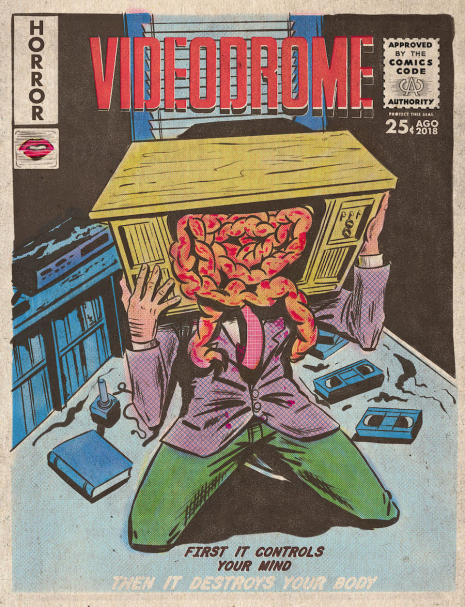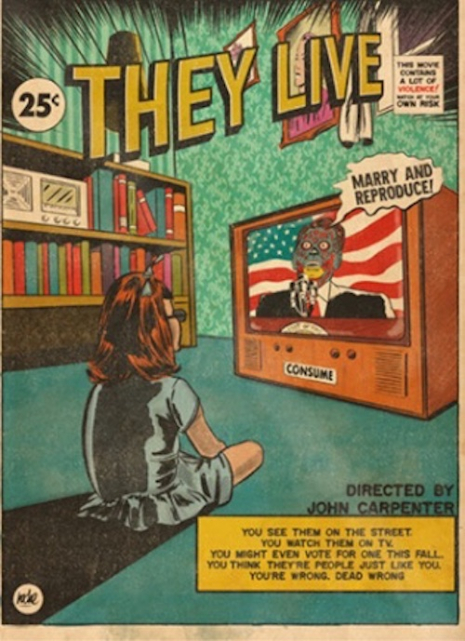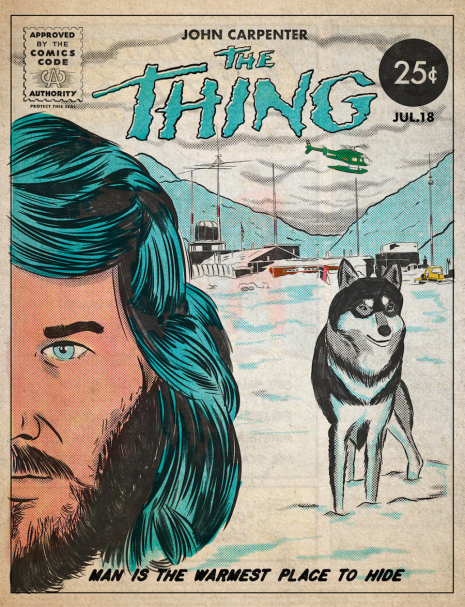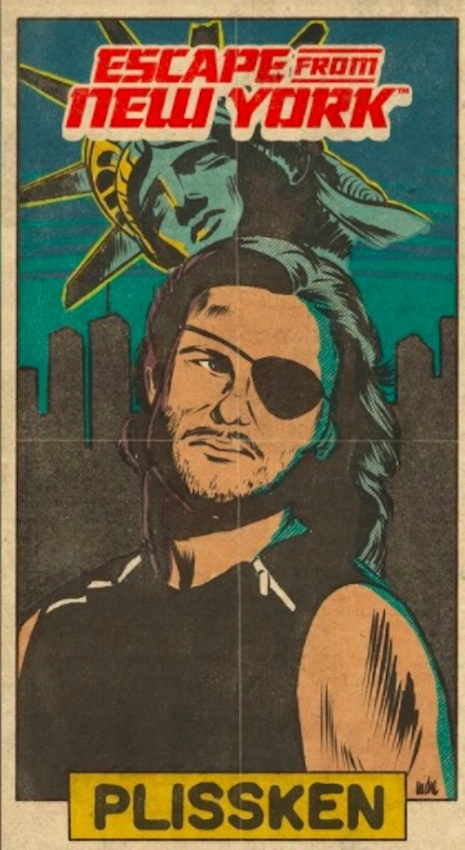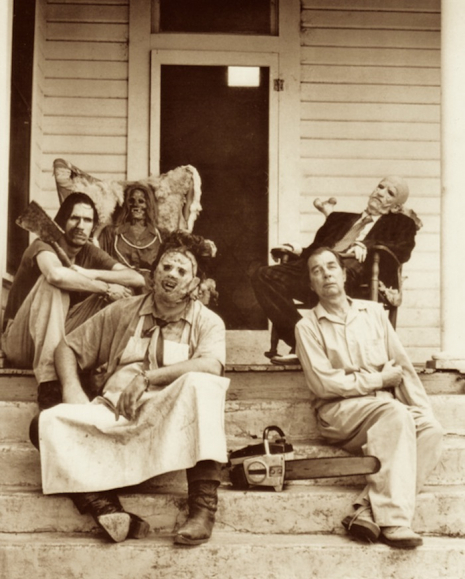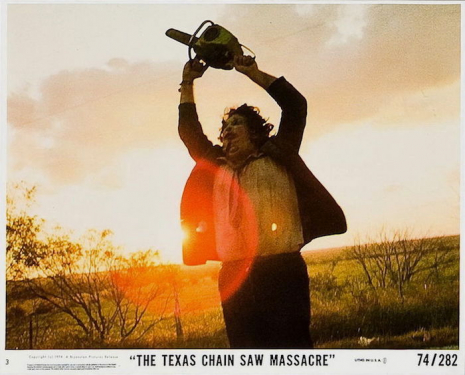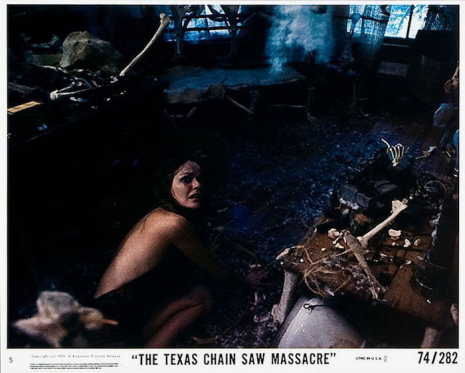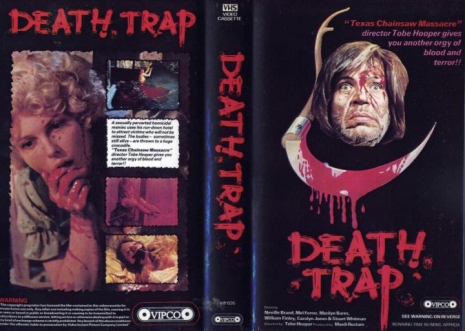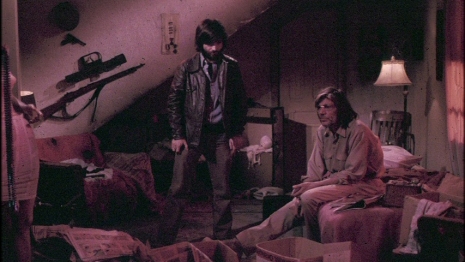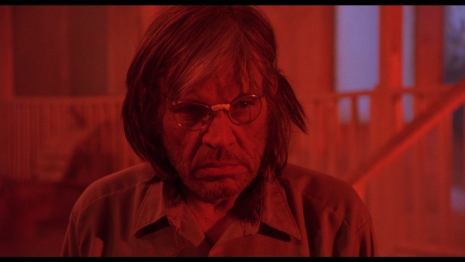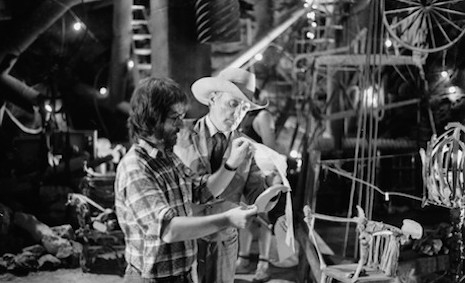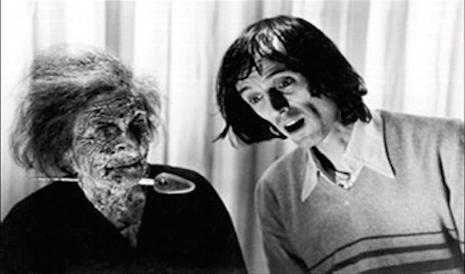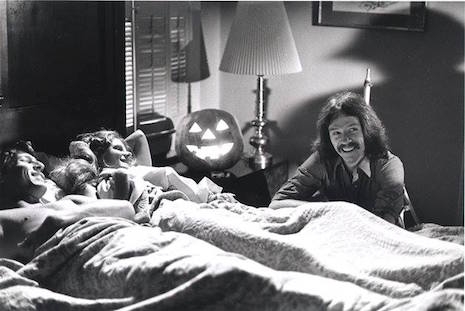
A Japanese movie poster prominently featuring Sally (played by actress Marilyn Burns) for ‘The Texas Chain Saw Massacre’ 1974.
As we’re all in need of a good distraction right now, let’s momentarily escape into the cinematic world of hillbilly cannibals, as told by Tobe Hooper in 1974’s The Texas Chain Saw Massacre. First of all, it’s that time of year again if you’re still keeping track of the current date or happen to remember what we used to use calendars for. For myself, a year-long dedicated horror film fanatic, I make it a point to re-watch my favorite horror films during October’s 31 days, and TCM ‘74 is always one of them. Like so many great movies, it was filmed under remarkably difficult circumstances—yielding agonizingly authentic performances from its cast. To say nothing of the athletic screaming and real injuries suffered by one of Leatherface’s targets, Sally, played by actress Marilyn Burns (RIP). Let’s begin this dusty, blood-filled journey through Texas with some of the things Burns was subjected to on the film’s set.
Marilyn Burns is one of cinema’s best known scream queens and was in her early 20s when she won the role of Sally in The Texas Chain Saw Massacre. Burns had appeared in a few films before TCM, but, according to the actress, her scenes ended up on the “cutting room floor.” Shot in extremely isolated areas around Texas, Hooper’s goal of creating the isolation necessary for a killing ground to thrive was immersive. Filming began during the summer heat of 1973, where temperatures in the famous Texas Chain Saw house would reach 120 degrees. Actors would need to take a break from filming to vomit due to the heat enhancing the smell of rotting animal bones and carcasses. Outdoor temperatures were boiling into the 100-110 degrees region every day. Enter Burns, in one of the film’s many chase scenes, being pursued by 300lb, 6’4 Icelandic actor Gunnar Hansen (RIP) in full Leatherface gear, rumbling chainsaw in hand. To increase your blood pressure for this story, Hansen had never used a chainsaw in his life before he appeared in the film. The story of one of Sally’s more serious injuries on set while being relentlessly chased through the thicket by Leatherface, was revealed by Hooper in the Toronto-based newspaper Excalibur in 1974:
“She (Burns) had a few accidents on the set. After running through the thicket, she had to go to a plastic surgeon to have thorns removed from her breasts.”
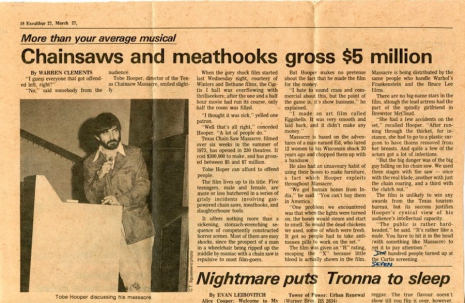
An image of Hooper’s interview in Toronto newspaper Excalibur, March 27th, 1974.
So, as it pertains to Burns’ famous screaming in TCM, in this particular instance (and others in the thicket), Burns’ screams are all too real, and the blood on her shirt is largely her own. Talk about taking one for the team. Here’s another recollection from Burns about how she and the rest of the kids in the doomed van almost met their maker by messing around with gunpowder:
“It was real hot and miserable, especially when Ed [actor Ed Neal who plays the hitchhiker] came on and gunpowder had to explode, and we didn’t know what we were doing. They just put gunpowder on his hand and lit a match. We almost killed ourselves!”
Moving on to Leatherface, Gunnar Hansen probably suffered more than anyone else in the cast except for Burns. If you’re a horror nerd like myself, you probably know that Tobe Hooper required that Hansen’s Leatherface costume never be washed to ensure continuity. His smell would become intolerable to Hansen and the entire cast, adding to the oppressive feeling of decay and demise. Additionally, in nearly every case in the film (with the notable exception of Mary Church, Marilyn Burns’ stuntwoman), no stunt doubles were used. Hooper would film chainsaw segments in three stages—once with the real blade, another with just the chain “roaring” and a third with the clutch out (noted in the Excalibur article). So, let’s imagine the horror of being Gunnar Hansen, running through the dark, with a real, running chainsaw in his “Killing Mask” (one of three different masks worn by Leatherface depending on his mood). I mean, what could possibly go wrong? Lots, it turns out, including a one-take shot in the darkness with Burns and Leatherface where Hansen fucking tripped, sending the running chainsaw flying through the air. NO BIG DEAL.
For all his efforts, and after waiting nine months for his paycheck, Hansen, who wrote a book about his experience in the film, received a whopping $47.50 for his performance in TCM. The final insult would come from the media in his homeland of Iceland who were completely unaware of Gunnar’s participation in the film and gave the film a two-star rating. And since we were just discussing chainsaws, let’s find out more about how they contributed to Wayne Bell’s infamous “score.” And who better to talk about what that was like than the man himself:
“Pretty much my job was finding all the sound effects we needed, which often meant inventing ways to make them. You have to ask yourself, what does chainsaw teeth hitting a wheelchair sound like? How do you capture it? What we would now have a few effects editors, a background editor, and a Foley team do, I did it all myself back then. We didn’t do any post chainsaw. We made a point to capture what we needed while we were on set. Gunnar, the actor that played Leatherface, was a real team player – most of the production chainsaw you hear in the film was operated by Leatherface himself.”
Of course, there are other sounds throughout TCM, including noise made by kids’ toys—specifically of the musical variety such as cymbals, maracas, and the ever-popular xylophone. Bell also amusingly recalls “torturing” his Kay stand-up five-string bass doing anything they could to cultivate other creepy sounds to enhance the film. According to Bell, these additional sounds were recorded in a room in Hooper’s house, filled with all kinds of instruments. Any animal sounds heard in the film are credited to Bell’s father, a very talented animal sound imitator. Who knew? Fun fact! Any chicken sounds you hear are from actual chickens, not Bell’s pet-imitating Dad. Though no actual “soundtrack” exists for TCM, the original quarter-inch tapes do, and Bell has mused about the possibility of putting out a “LoFi, distorted, noisy and dirty” version of it someday. One final thing regarding the sounds you hear in TCM concerns the uneasy noise you hear during the opening and again after the film. Bell is very protective of the sound, which he describes as a “stinger” that he created that has become synonymous with TCM ‘74, and to date, he has never revealed how it was conceived or made. Kind of like the secret ingredient in a certain barbeque sauce.
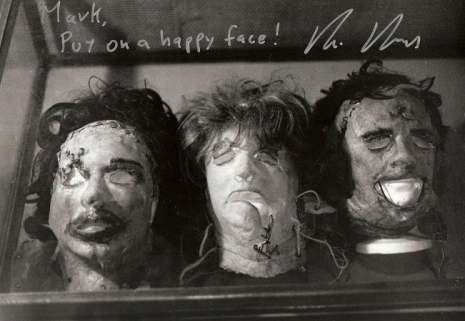
Put on a happy face! Three of Leatherface’s masks. Image source for this and the following three images.

A candid shot of Burns traipsing through the thicket in the dark.
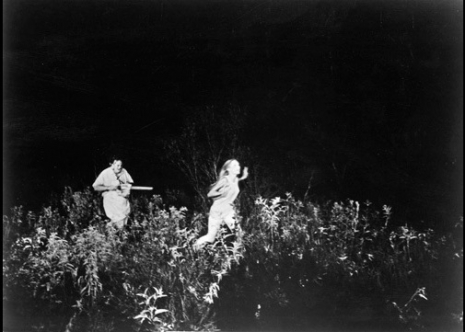
Another image of Leatherface pursuing Sally through the brambles.
Much more after the jump…
